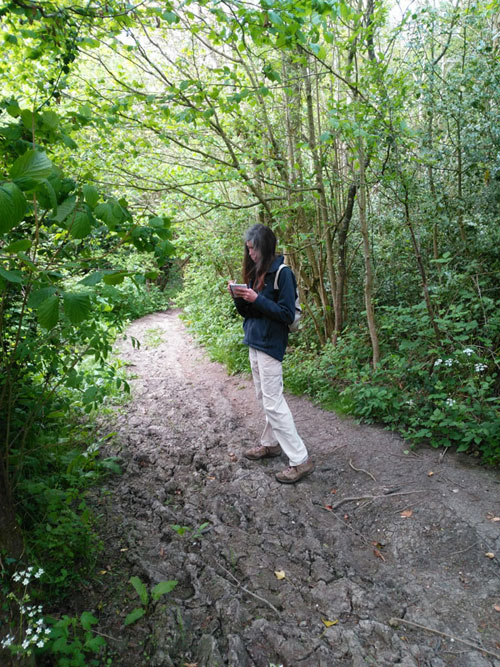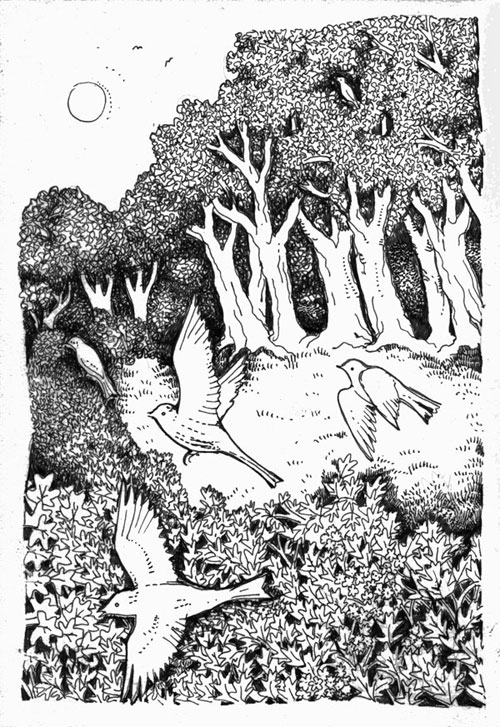A Seasonal Serenade was first published on the South Downs Farmland Bird Initiative blog on 18th January 2018.
There are highlights to every walk and my transect for the SDFBI is no exception. On a May morning I walk the path beside Lag Wood just south of Hassocks to reach the start point of my transect square at an old red bridge. At this time in spring the path is fringed with greater stitchwort, herb robert and a profusion of cow parsley while the wood rings with the songs of great tits and song thrushes. When I reach the bridge, I cross over it to the edge of Bonny’s Wood and Clayton Burial Ground. Each year, I linger here expectantly and I’m usually not disappointed. From deep in the vegetation at the edge of the wood a beautiful, melodic song bursts forth, the song of a nightingale. It is a delight to be serenaded.

Bonny’s Wood is private. From the footpath, I can see mature oaks, hazel and field maple along with plenty of hawthorn, holly and honeysuckle; vegetation cover that nightingales need. The wood is described as an ancient semi-natural woodland and has been managed sensitively and traditionally in a similar way to Butcher’s Wood – owned by The Woodland Trust – and Lag Wood nearby. Together they create a mosaic of woodland and fields that benefits wildlife.
A male nightingale will sing both at night – as its name suggests – and early in the day to proclaim a territory. He will sing at night to attract a female returning on her nocturnal migration from southern West Africa. When she arrives and has laid eggs he will continue to sing by day but no longer by night and he’ll reduce his whistle songs. Nightingales tend to return to the same nest site each year.
As I continue walking the transect, past the burial ground and into sheep fields and farmland, I often encounter a yellowhammer or two hearing their little-bit-of-bread-and-no-cheese song before I see the bright yellow of heads as they sit on top of the hawthorn hedges singing. I might glimpse a whitethroat flitting in and out of cover or hope to see a few swallows twittering over the farm buildings. Overhead a buzzard may circle on the rising thermals as the heat of the day increases. On into a pocket of woodland there is a strong chance I’ll hear or see chiff-chaffs, robins, treecreepers, nuthatches along with thrushes, tits, sparrows, corvids and tits. Out of the wood again there will always be gulls high over the fields and the odd pheasant strutting along a field boundary.

It is always a pleasure to walk the transect, but the highlight for me is hearing the nightingale song. I shall be sad if I fail to hear one on my SDFBI transect walk this year as I know they are in decline.
